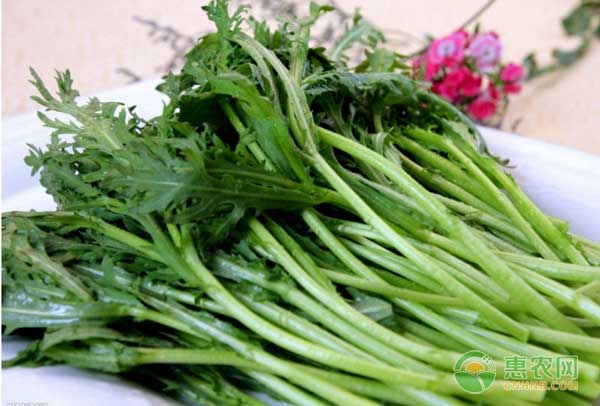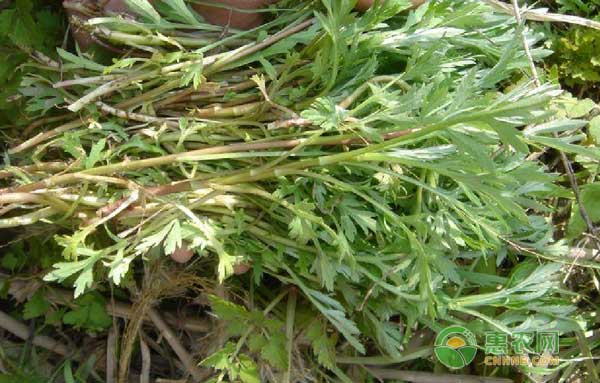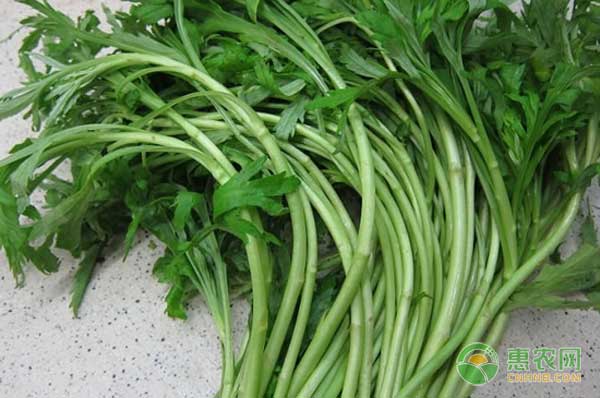Artemisia argyi is a kind of wild vegetable, which mainly feeds its tender stems. It tastes delicious and nutritious. In recent years, Artemisia argyi has gradually been artificially cultivated. With the expansion of cultivation area and diverse planting patterns, continuous cropping obstacles are generated, and the frequency of pests and diseases is high. The main pests and diseases in the cultivation of Artemisia argyi have downy mildew, powdery mildew, gray mold and sclerotinia , locusts, worms, snails, snails, etc., in order to ensure the green and pollution-free characteristics of Artemisia argyi, scientifically and effectively control the quality and safety risks of Artemisia argyi products, and improve the quality and safety of Artemisia argyi products. The common pests and diseases of Artemisia argyi and its green prevention and control technology. 1 Pests and diseases 1.1 Downy mildew It is the main disease in the production of Artemisia argyi. It can be attacked from the seedling stage to the harvest stage. The seedling stage is mainly caused by the damage of Artemisia argyi leaves. Generally, the disease begins from the middle and lower leaves, and the damaged leaves begin to show pale green water-stained spots. The edge of the plaque is not obvious. After expansion, the yellow-brown irregular shape is water-immersed. When the humidity is high, the back of the leaf grows with gray-white mildew. When it is severe, the whole plant rots. When the shed is dry, the diseased leaves gradually turn yellow and dry. 1.2 Powdery mildew It mainly harms the leaves of Artemisia argyi, and it is also harmful to stalks in severe cases, which is easy to occur in spring and summer and autumn. On the initial leaves, white spots appear first, then expand into near-round powder spots, and the lesions expand into large white powder areas. The whole leaves are covered with white powder. The front of the leaves is thicker than the back side, and the leaves are chlorotic. The yellowish and brittle, the symptoms of stem damage are similar to the leaves. The germination temperature range of powdery mildew pathogen is 5~35°C, the optimum temperature is 20~30°C, and the relative humidity is 80%~100%, which is beneficial to the disease, but the water droplets have inhibitory effect on powdery mildew spores. Spring and autumn are the peak periods of the occurrence of powdery mildew of Artemisia argyi. 1.3 gray mold It mainly starts from the leaves of aging near the ground, and starts to expand inward from the tip of the leaf along the branch veins. It is yellowish brown after the initial water immersion, and the boundary between disease and healthy tissue is obvious. The surface is sparse and light gray. In the mildew layer, the leaves are damaged and yellowed and then die. The requirement for humidity is high, and the relative humidity of the air is more than 90%. It mainly occurs in the summer and autumn leaves of Artemisia argyi. 1.4 Sclerotinia The old leaves and stems near the ground are prone to disease. The initial diseased parts are water-stained and light brown. When wet, the white flocculent hyphae grow, the stems are slightly sunken, from light brown to white, and the later stems are rotted into fibers. In the shape of a dead rattle stalk, a rat fecal sclerotium is produced. The sclerotia remains in the soil or is mixed in the seedling residue for wintering or summering. The disease belongs to the conidial airborne disease type, which is re-infected by contact of conidia and healthy plants. The relative humidity is higher than 85%. The temperature is 15-20 °C, which is good for sclerotial germination and mycelial growth, invasion and ascending disk. produce. Therefore, early spring or late autumn with low temperature, high humidity or heavy rain is conducive to the occurrence and prevalence of the disease. 1.5 Locust Also known as greasy insects, honey worms, Artemisia argyi seedlings (pre-stage) prone to occur. Chengyu and Ruoqi clustered on the back of the leaves of Artemisia argyi, and the stems of the plants were sucked. The excreted honeydew is transparent, thick and sticky, and it can block the physiological activity of Artemisia argyi. It is easy to induce coal pollution. At the same time, the mites also spread viral diseases, causing abnormal growth of leaves and irregular shrinkage on the back of the leaves. , curling, falling off, etc. 1.6 Artemisia selengensis Artemisia scoparia is a major pest of the genus Diptera, which is the main pest on the compositae. It is easy to occur in the spring and summer and autumn. The larvae mainly damage the leaves and tender stems. After the larva enters the leaves, they feed on the stimulating leaves, which produce small blister-like worms. The worms turn green and then become purple-red, which causes the leaves to be distorted. When the stalks are damaged, the stems grow out. Tumor, reducing the commercial properties of Artemisia argyi. The larvae occur in the soil for 3 to 4 generations. The larvae overwinter in the soil in the spring, and the larvae in the spring and early summer begin to damage the young stems. In the early summer, the leaves cause the leaves to appear in the leaves, resulting in poor plant growth. 1.7 Spodoptera litura It belongs to the family Lepidoptera, and it is a kind of omnivorous and gluttonous pests. It is mainly caused by larvae. The larvae are heterozygous and have a large amount of food. The newly hatched larvae are damaged by the leaves of the leaves, and only the epidermis is left. After the larvae, the leaves are nicked, incomplete, and even eaten. The optimum development temperature of each insect state is 28~30°C, so the highest temperature in the whole year is from July to September. 1.8 snail It mainly causes holes and nicks in the leaves. In severe cases, it can eat the leaves of Artemisia argyi to bite the tender stems. The white gum and cyan rope-like feces left by crawling affect the normal growth of Artemisia sinensis. 2 Green prevention and control measures 2.1 Agricultural measures 1 The selection of excellent varieties of solar greenhouse, Artemisia argyi, requires specific varieties. Irrigation cloud solar greenhouse cultivation, mainly using stalks of pale green, thick and tender, high yield of Artemisia scoparia (Da Qingpi), such as Artemisia No. 1, Artemisia No. 2, with downy mildew resistance, powdery mildew resistance, antifreeze Good character and so on. 2 Reasonable close planting seedling breeding time is from late June to early August, planting seedling density is 140,000 plants/667m2, and the colonization time of Artemisia argyi in the greenhouse of Guanyun County is from mid-September to early October, with 9 Mid-month is appropriate, 667m2 is suitable for planting 38,000 to 40 million plants, the appropriate lean production is stable, and can also effectively reduce the incidence of major diseases. The three strains were selected and cut into the ground, and the middle semi-lignified stems were cut into 15~18cm, and tied into small pieces. Soaked with 50% carbendazim WP 500 times for 24 hours, or used 80% dichlorvos EC 2mL/m3 fumigation for 2h, then placed in a cool and ventilated place for 7 to 10 days, after the roots of Artemisia sinensis were born and planted. 4 Fertilizer management Before the planting, the soil needs to be deeply cultivated and sun-dried, and the base fertilizer is applied. The high-quality organic fertilizer is mainly used, and the decomposed manure is applied every 667m2. 3000~3500kg or decomposed soybean cake fertilizer 200~250kg plus 45% compound fertilizer 50kg, after ploughing and fine hoeing, the glutinous surface is 3.0~3.5m wide, the gully width is 30cm, the depth is more than 20cm, the field ditch is matched, and the fertilizer drip irrigation is installed. The system is beneficial to the control of temperature and humidity in the solar greenhouse, and the well water irrigation should be adopted in winter, which is beneficial to improve the resistance of the plant and reduce the occurrence of diseases. 5 Reasonably arrange the mouthwash, timely clean up the pastoral to avoid continuous cropping, use the solar greenhouse birch wormwood + tomato planting mode to realize the winter market of Artemisia argyi, to meet the demand of reeds in winter, and the tomato planted by Artemisia argyi is located at the same time. At the end of the market for tomatoes in the northern solar greenhouse, the time to market for tomatoes was staggered, which not only satisfied the market supply, but also improved the economic benefits, and also eradicated the root cause and knot nematode disease. The upper scorpion should try to avoid planting Compositae plants. Before planting, it is necessary to remove the field residues and dead branches and leaves, deepen the soil, and eliminate the field bacteria and wintering insects. 2.2 Physical measures For the locusts, a yellow plate can be used to trap, and a yellow sticky worm plate of 25 cm × 40 cm is suspended at 20 cm above the plant in the shed, and 30 to 40 pieces are suspended per 667 m 2 . For Artemisia scoparia and Spodoptera litura, a 20-mesh insect-repellent net can be used to cover the whole process after planting the live tree to cover the shed film. After the film is covered, an insect net can be placed in the vent and the entrance of the shed to effectively prevent pests. Immigration is harmful. For Spodoptera litura, insecticidal lamps and sexual attractants can also be installed to trap adult insects. 2.3 Biological control For mites, some repellent plants such as leeks, alfalfa, and onions can be grown. For Artemisia sinensis, it can protect and utilize natural enemies such as the wasp and wasp. 2.4 Chemical control Downy mildew, in the early stage of the disease, 58% of the nail cream, manganese-zinc wettable powder 500 times liquid or 69% enoyl-manganese-zinc water dispersible granules 600 times liquid spray treatment; powdery mildew, more than 3% in the initial stage of the disease Oxytomycin emulsifiable concentrate 1000 times solution or 75% chlorothalonil WP 600 times liquid spray control; gray mold, 40% pyrimethanil suspension 800 times solution or 50% keeling (Pythium glutamate) wettability Powder 500 times liquid spray control; Sclerotinia sclerotiorum, 40% pyrimethanil suspension per 667m2 10g + 40% sclerotium net wettable powder 20g or 50% procymidone WP 30g spray 50kg water, weekly Once, prevent 2 times. Aphids, 2.5% cyfluthrin EC 2500 times solution or 10% imidacloprid WP 1500 times solution can be used for spraying in the early stage of pests; cockroaches, 2.5% chlorofluorocyanide in the beginning of pests 2,500 times solution of chrysanthemum emulsifiable concentrate or 3% spray of 3% Avi-high-chlorine emulsifiable concentrate; Spodoptera litura, in the incubation period of pest eggs, 2.5% of spinosad suspension 800 times solution, 1% of vitamin A The emulsion of 2000 times liquid of emulsifiable concentrate or 2000 times of 5% of fluoropyridinium emulsifiable concentrate is controlled by spraying. Continuous cropping obstacles have a great impact on the production of Artemisia selengensis. Therefore, it is possible to use disease-resistant varieties or other crop rotation methods to reduce the incidence of pests and diseases and obtain higher planting benefits. NINGBO MEDICAL EQUIPMENT CO.,LTD , https://www.techartmeds.com


Common pests and diseases of Artemisia argyi and its green prevention and control technology